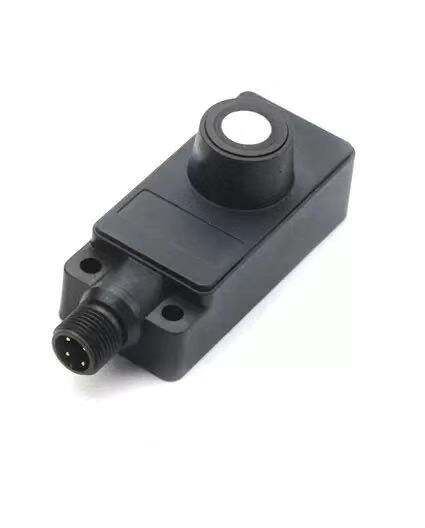Introduction
Known for being precise and reliable, ultrasonic sensors have become a must-have in a number of fields.Using high-frequency sound waves, these sensors measure distance, identify objects, or indicate levels of fluid.So many different possibilities for its Application also point up the versatility of ultrasonic sensors. made by piece by word case in introducing sentences - Any industry looks like a good location to try it out again!
Automotive Applications In the automotive industry, ultrasonic sensors help create a safer and more convenient environment for driving. Parking assistance systems use them to detect obstacles,and thus assist drivers in parking.Collisior avoidance systems use ultrasonic sensors to measure the distance to other vehicles, threatening danger to drivers.And adaptive cruise control systems also use them to keep an adequate distance away, while blind spot detection systems help drivers switch their car close by.
Industrial Automation
In industrial automation, ultrasonic sensors play a key role in achieving precision and accuracy. On the production line, they count and sort objects to ensure efficient processes.Level measurement in tanks and silos, another activity for this type of sensor by providing real-time data stops overflows before they start or locates low levels ahead of time.Robots use it to avoid obstacles and, in confined spaces, to provide precise movement. In this way the automated systems gain both efficiency and safety from such sensors as these.
Medical Applications
In the medical field, ultrasonic sensors are mainly used for the purpose of imaging (for diagnosis), such as ultrasound scanning techniques which allow noninvasive views inside organs and even fetuses.The method by which ultrasonic sensors can generate high-power sound waves is used in the sterilization process of medical equipment.Thus it helps to break down such contaminants.Furthermore, ultrasonic sensors are being investigated for medical drug delivery systems. Here the research aims to find ways of giving a local application to drugs by pinpointing their destination.
Environmental Monitoring
Contributions from ultrasonic sensors to water quality liquid level monitoring at water treatment facilities and air quality testing. They are in wildlife studies used to record animals' actions and migration paths with the minimum effect on these animals.
Ultrasonic sensors can calculate changes in air pressure and humidity via weather monitoring techniques.The newly available data make forecasting easier and more accurate. With a more refined means for finding disease onset times or warning when danger threatens.
Consumer Electronics
¡¡In smartphones and tablets, ultrasonic sensors enable proximity sensing making possible functions such as auto-rotation and screen wake-up when you bring your device close to your face.Gaming consoles use these sensors for gesture recognition to make hand movements in the game characters. With the increasing popularity of smart appliances, ultrasonic sensors also help vacuum cleaners and drones to recognize obstacles which augments their operation efficiency and usefulness.
Safety and Security
Safety and security would be greatly affected without ultrasonic sensors. In manufacturing process they detect unauthorized motions and hence keep an eye on intrusion. Traffic studies for counting cars or measuring roadway flow rely heavily upon the monitoring of air pressure by ultrasonic sensors. For elevators, disaster prevention at Home is the work of these sensors--they prevent doors from closing on objects or individuals and find any interference in this way. In industrial applications, they chase collisions from taking place between equipment and people.
Aerospace and Defense
Ultrasonic sensors play a role in aircraft navigation and obstacle detection. They are especially important when visibility is low (such as mountainous terrain). For example, they are essential under water because underwater exploration needs to discover with which plants and animals it communicates through sound effects. Consequently this sort of sensor becomes an underwater danger detector supporting bilateral communication through signal transmission in both directions. There are other uses as well, in defense, ultrasonic sensors guide missles while detecting underwater mines and other dangers also.
Agriculture
In farm applications, also, ultrasonic sensors are coming into increasing use for monitoring crops, calculating yields, then giving data to help farmers make the most of their harvests; they measure soil moisture too, returning also water resource savings to the farming community. Livestock tracking and health monitoring are other uses, where ultrasonic sensors can detect symptoms of disease or discomfort in the animals then allow management to be improved for a farm as a whole.
Material Processing and Quality Control
In production, ultrasonic sensors measure the thickness of materials and check for imperfections, guaranteeing product quality and uniformity. The slope of the filler material in industrial processes may be determined by them, thus preventing materials from spilling over and ensuring smooth running production lines. They also inspect covering material, verifying that Products are safely encased and securely sealed.
Conclusion
Ultrasonic sensors find a wide range of applications--from increasing safety in automobile systems to improving efficiency of industrial processes. Being able to accurately detect and measure without physical contact is their biggest advantage in many levels and enterprises. As technology continues to advance, the range of possible applications for ultrasonic sensors will expand further, showing their versatility and potential.

